Is it possible to check how many documents remain in the corpus after applying prune_vocabulary in the text2vec package?
Here is an example for getting a dataset in and pruning vocabulary
library(text2vec)
library(data.table)
library(tm)
#Load movie review dataset
data("movie_review")
setDT(movie_review)
setkey(movie_review, id)
set.seed(2016L)
#Tokenize
prep_fun = tolower
tok_fun = word_tokenizer
it_train = itoken(movie_review$review,
preprocessor = prep_fun,
tokenizer = tok_fun,
ids = movie_review$id,
progressbar = FALSE)
#Generate vocabulary
vocab = create_vocabulary(it_train
, stopwords = tm::stopwords())
#Prune vocabulary
#How do I ascertain how many documents got kicked out of my training set because of the pruning criteria?
pruned_vocab = prune_vocabulary(vocab,
term_count_min = 10,
doc_proportion_max = 0.5,
doc_proportion_min = 0.001)
# create document term matrix with new pruned vocabulary vectorizer
vectorizer = vocab_vectorizer(pruned_vocab)
dtm_train = create_dtm(it_train, vectorizer)
Is there an easy way to understand how aggressive the term_count_min and doc_proportion_min parameters are being on my text corpus. I am trying to do something similar to how stm package lets us handle this using a plotRemoved function which produces a plot like this:
